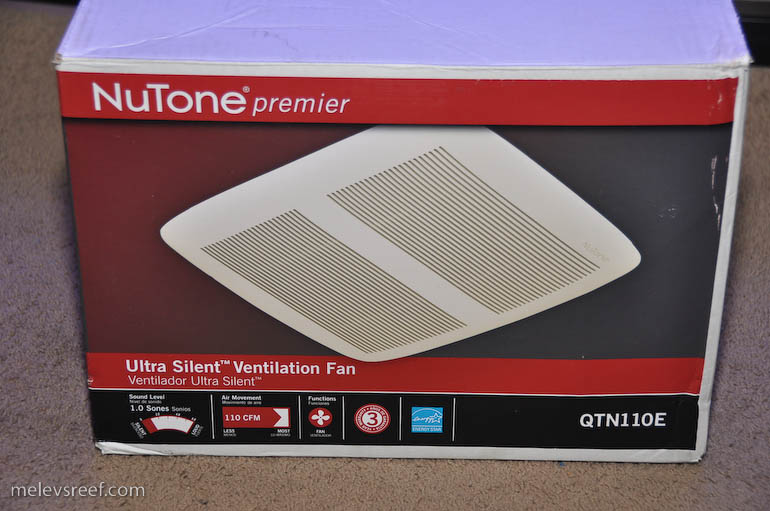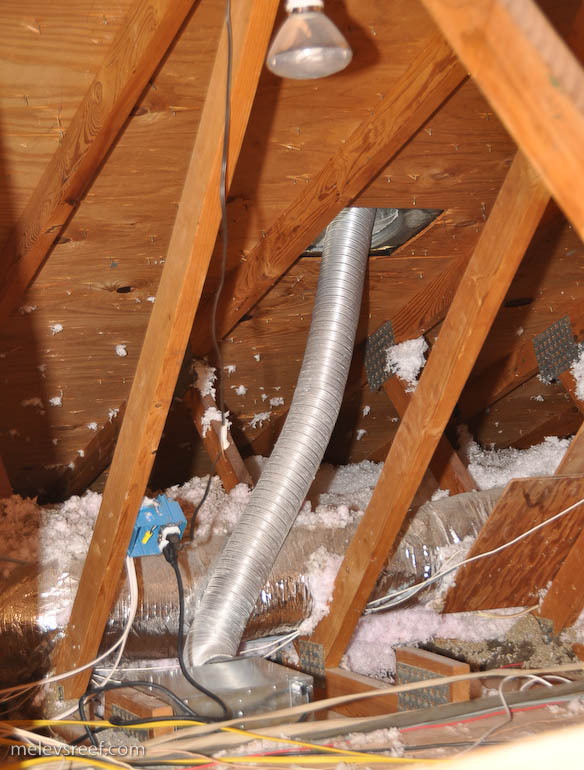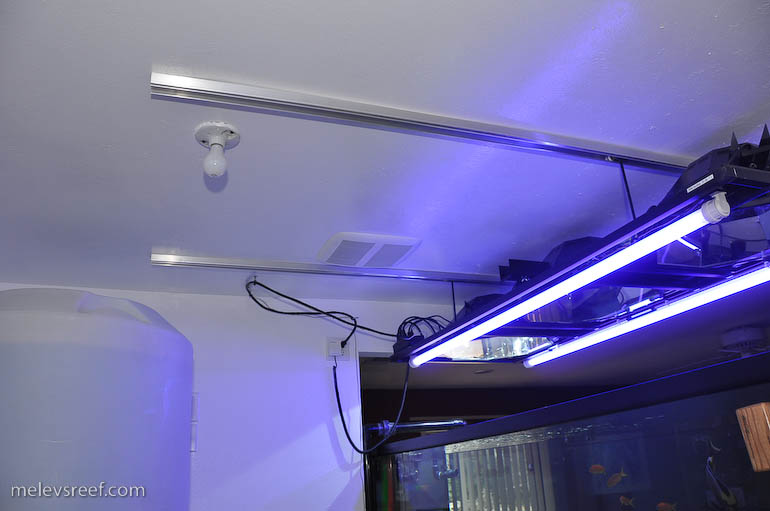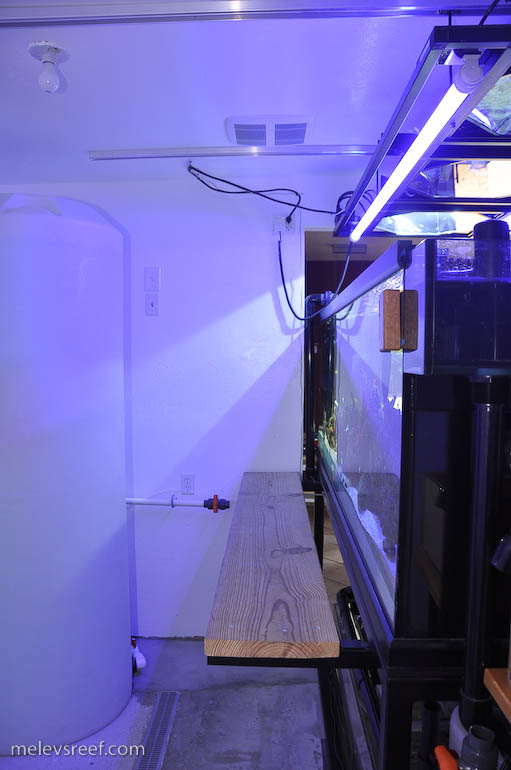Fishroom Vent Fan
by
, 03-08-2011 at 08:11 PM (9871 Views)
To keep humidity levels down in the fishroom, it's important to have a vent fan that exports moist air out of the home. With my last tank, humidity was a factor but once the vent was installed, a marked improvement occurred. During the remodeling project, I tried to clean up the old fan but it had shorted out, leaving a dead motor in its wake.
When the 280g was running, the vent was directly over the tank. I felt that was the perfect spot because it would exhaust heat from the lighting as well. However, what I observed was salt creep amassing on the vent, which would drip down onto the light fixtures and possibly into the saltwater below. With this tank, I decided it would be best to move the vent to an area I could reach more readily and it could drip on the floor without consequence.
Prior to Jessy's visit, I'd purchased this vent fan at Home Depot for $109.
I had a spot picked out in that attic that I hoped wouldn't interfere with any of the new stuff in the fishroom beneath, like the water vat or the light tracks.
While I was in the attic, I marked the sheetrock where the vent fan would be installed, and drilled some pilot holes through the sheetrock at the corners. Then I double checked where those holes were from inside the fishroom. They were in the perfect spot.
Jessy helped me out by holding a styrofoam cooler against the ceiling while I cut out the hole from above with a Saws-All. She caught all the sheetrock dust and the square piece of sheetrock that dropped through.
The vent fan's body was screwed to an adjacent ceiling joist. A section of rigid aluminum tubing directed the exhaust out the whirlybird in the roof above. This is how the last vent was run, and I never had mold or mildew issues. The fan was wired to a common 6' grounded cord, which was plugged into a nearby outlet that is controlled by a switch in the fishroom.
The fan runs around the clock all year long. On rare occasions, it is switched off, like when the weather is below 30F at night. During those cold winter nights, the fan is off to stop pulling out warm air from the house so the reef's temperature doesn't drop too low. During the day time, the fan is turned back on. I'd say the fan is off maybe one week a year.
This fan comes with a 2-year warranty. It is 1 sone, which is dead silent. It uses about 2 amps.
As you can see, placement was absolutely perfect. I can step up on the walkboard when the cover has to be taken down to clean it.
This project was completed in less than 30 minutes, and immediately the difference was apparent. The tank's temperature doesn't get as hot during these milder weather weeks, and the house humidity dropped as expected. During the seven month remodel, I wasn't venting my home with all that water in the livingroom, and the intake grates to my central A/C have rust damage. I'll have to replace those with new ones soon.


















